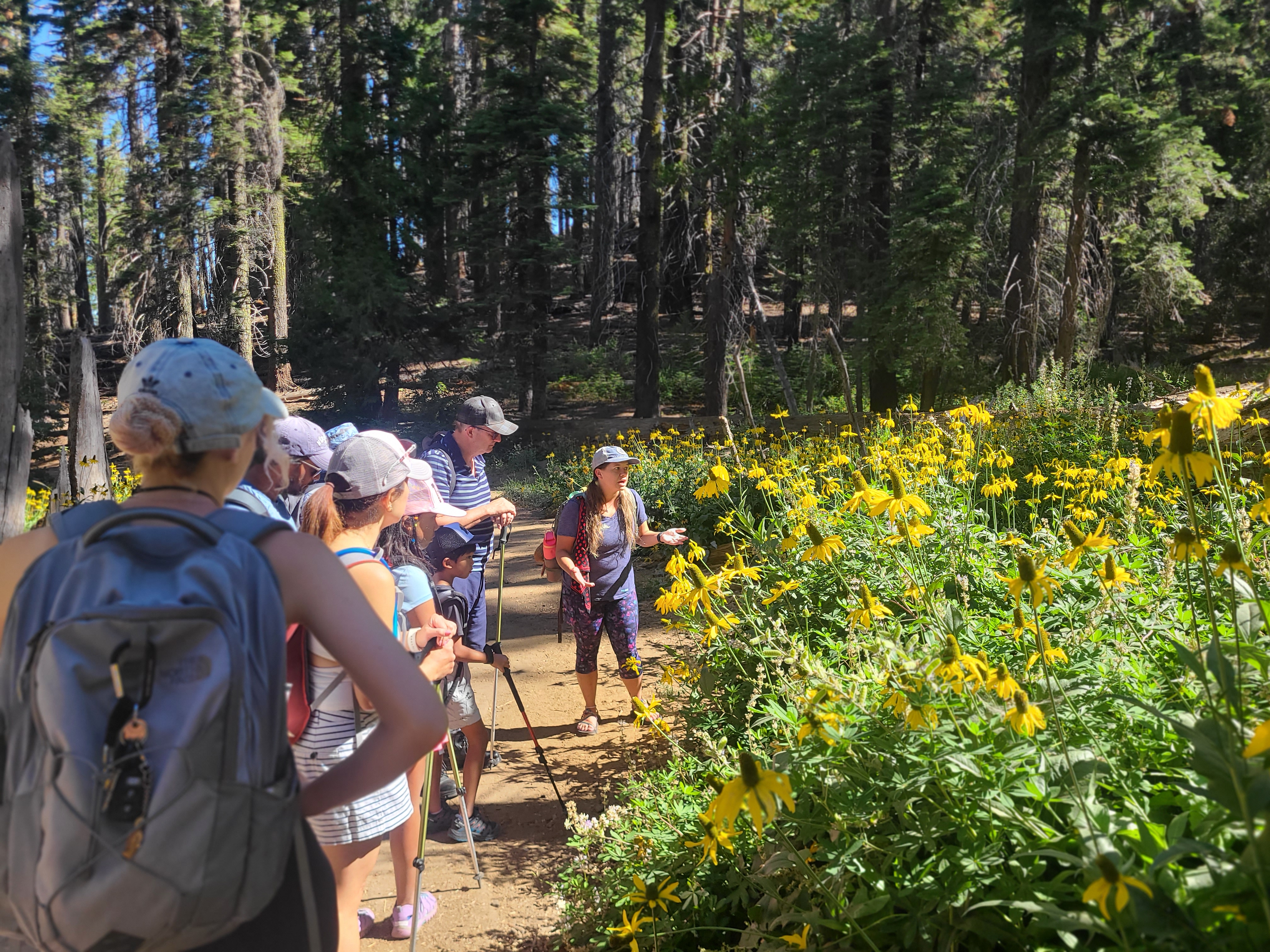The best time to see wildflowers in Yosemite National Park is mid-spring to summer, when the most blooms are open and the weather is perfect for exploring. While you can spot colorful blossoms nearly year-round, the months between March and July offer the most vibrant displays across the immense park, which is home to more than 1,400 species. In Yosemite Valley — the park’s most popular area — wildflower viewing peaks in late May and early June.

A Rule of Thumb for the Best Yosemite Wildflower Viewing
The most important rule to follow when viewing wildflowers in Yosemite is to follow the snowmelt. In general, wildflowers at similar elevations throughout the park bloom at around the same time of year, but the specific timing varies based on the snowfall and weather. Deeper snowpack makes for later blooms, while less snow throughout the season generally means wildflowers will pop up earlier. In either case, the sooner warm weather melts the snow, the sooner wildflowers will appear — and the sooner they’ll hit their peak.
Yosemite Wildflowers in Spring and Summer
Spring and summer in Yosemite offer a stunning progression of wildflower blooms, beginning in the park’s lower elevations in early spring and rising to the alpine meadows by midsummer. Here’s when and where you can catch the best Yosemite wildflower displays, along with what to look for:

Early to Mid March
- Elevation: Low (below 4,000 feet)
- Where: Western edge of the park; Merced River Canyon, Hite Cove Trail, lower elevations near Wapama Falls in Hetch Hetchy
- Notable wildflowers: California poppies, spider lupines, redbuds, tufted poppies, owl’s clover
Late March to April
- Elevation: Low (below 4,000 feet)
- Where: Cook’s Meadow Loop (Yosemite Valley), Wawona Meadow Loop
- Notable wildflowers: Baby blue eyes, goldfields, shooting stars, fiddlenecks
Late April to Early June
- Elevation: Mid (4,000 to 6,000 feet)
- Where: Yosemite Valley (peaks late May to early June), Wawona, Mariposa Grove
- Notable wildflowers: Pacific Dogwood (early May; flowering tree), lupines, Indian paintbrush, western azalea, leopard lily, iris, evening primrose
Late Spring (May to Early June)
- Elevation: Transitioning to higher elevations (above 6,000 feet)
- Where: Stream banks and wet meadows throughout the park
- Notable wildflowers: Marsh marigold, great red paintbrush, shooting stars, leopard lily, snow plants (bright red, emerging through snow before melt)
Late June to Early July
- Elevation: High/subalpine (above 6,000 feet)
- Where: Tuolumne Meadows, Lyell Canyon, Elizabeth Lake trails
- Notable wildflowers: Pink shooting stars, cinquefoils, asters, mousetail, subalpine paintbrush
July through August (sometimes into September)
- Elevation: High to alpine (subalpine and above)
- Where: Tuolumne Meadows and surrounding trails, including Mono Pass and Gaylor Lakes
- Notable wildflowers: Alpine laurel, buttercup, Sierra butterweed, steer’s head, alpine asters, knotweed, angelica, swamp onion, fireweed, mountain dandelion, red heather, corn lilies, larkspurs, Brewer’s lupine, columbine, Sierra gentian, sky pilot, penstemon, monkeyflower, buckwheat
Note: Bloom times vary year to year based on snowfall, snowmelt and temperature fluctuations. Check current conditions or ask a park ranger before planning a wildflower hike.

Insider Tips for Planning a Yosemite Wildflowers Expedition
Not sure where to start? Follow these insider tips for planning a trip to see wildflowers in Yosemite:
- Visit the recreation desk during your stay at one of our Yosemite hotels: Evergreen Lodge, Rush Creek Lodge or Firefall Ranch. A staff member will be able to tell you where to view wildflowers during your stay.
- Create a flexible itinerary to accommodate weather, slow-paced strolls through your favorite areas and exciting discoveries in the park.
- Refer to the National Park Service website for the most up-to-date information about the park, including the latest news about wildflower blooms, road closures, and pass and permit requirements.
- Join a ranger-led wildflower excursion. To find one, check the park’s calendar for the schedule of events, usually added about a month in advance.
Thanks to the range of elevations in Yosemite, there are almost always wildflowers to see — but the best time to view the vibrant display is during spring and summer, when the most blooms are present and pollinators add to the magical scenes. Plan your Yosemite wildflower excursion now to see the park’s breathtaking landscapes that are home to over 1,400 species of wildflowers. Still not sure when to come? Find more information about the best time of year to visit Yosemite.

